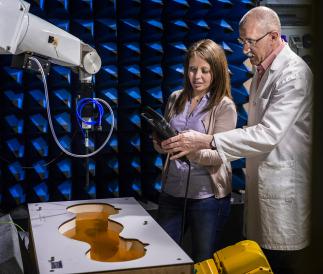Chairman’s Letter
The Sustainable Development Goals (SDGs) represent common objectives in key areas to ensure the sustainable development of the planet, such as ending hunger and poverty, the protection and conservation of water resources, the production of clean energy, raising awareness about responsible and conscious consumption, promoting access to healthcare and education, and reducing economic and gender inequality.
TIM Corporate Shared Value Model
Achievement
of 9 SDGs reference
Achievement
of objectives

Digitisation, connectivity and social innovation
TIM’s commitment
TIM, together with external partners and research activities, such as JOL WHITE, offers innovative e-health solutions (e.g. Nuvola IT Home Doctor, Cassiel 2.0) designed to improve the Italian health service and the effectiveness of healthcare.
Digital culture
TIM’s commitment
TIM promotes various digital literacy and inclusion initiatives in schools supporting innovation in education, an important lever for the social and technological development of the country. The two-year project “Using ICT in schools, with TIM” in collaboration with the Ministry of Education (MIUR) involves teachers from schools of all types and levels in 18 Italian regions.
Digital culture
TIM’s commitment
TIM believes that economic and social sustainability is based on actions that promote gender inclusiveness and as such it has set up 20 company daycare centres and 1 nursery school for a social value of over 1.3 million euros; #TIMgirlsHackathon to help bridge the gender gap under the scope of scientific culture, for a social value of 260,000 euros.
Digitisation, connectivity and social innovation
TIM’s commitment
TIM contributes to producing approximately 1% of the added value of Italian GDP with an employment impact of around 106,000 direct and indirect jobs, with a social value of 8,311 million euros. TIM supports economic growth through TIM #WCAP Accelerator with more than 9,000 projects involved in digital innovation and 294 start-ups supported, and through TIM Venture with 2.4 million euros invested in the best start-ups which have produced 2.5 million euros in turnover and collected 7 million euros in risk capital.
Digitisation, connectivity and social innovation
TIM’s commitment
Through the Digitisation of the Country, in 2016 TIM generated approximately 4.1 billion euros in Business Value and almost 2.8 billion euros of social value, with over 26,000 jobs provided thanks to the construction and deployment of the UltraBB network. With the JOLs it creates a profitable collaborative model of Open Innovation between universities and industry generating almost 700,000 euros of Social Value.
Digital culture
TIM’s commitment
TIM integrates the fixed and mobile BB and UBB connectivity offer with innovative solutions for more sustainable, secure and efficient cities and communities, ensuring business continuity in emergencies. With smartworking TIM has involved 9,000 employees with a saving of 250,000 euros for social costs avoided, 7.5 million km not travelled (amounting to 1,000 Tons of emissions saved).
Environmental protection
TIM’s commitment
Through energy efficiency TIM reduces its environmental impacts and proposes technological solutions to optimize consumption by private entities, businesses and the PA. In 2016, 80 million euros of shared value were measured for the environment.Projects
Energy efficiency
Digitisation, connectivity and social innovation
TIM’s commitment
GeSI studies demonstrate that ICT solutions can reduce global emissions by 20% by 2030. With the Digital Life Programme, a set of solutions for security, the environment and optimal energy management, TIM promotes a low environmental impact Smart City model, enabling energy savings of over 50%.Projects
TIM’s Digital Life ProgrammeOlivetti solutions

Digitisation, connectivity and social innovation
TIM’s commitment
Through the Joint Audit Cooperation (JAC) initiative, of which TIM has been a promoter partner since 2009, 69 audits were performed in 2016 in the manufacturing sites of suppliers and sub-contractors in Asia, Central and South America, North Africa and Eastern Europe to verify the level of sustainability and respect for human rights.Projects
www.jac-initiative.comFor TIM, listening to its stakeholders means improving its understanding of their demands and priorities regarding key aspects of its strategy, and gathering contributions on the potential areas of development of the strategy itself, with a view to improving the ability to create shared value between the Company and its stakeholders.
Multi-stakeholder Forum
During the forum, the process used by TIM to consult stakeholders, gather their proposals and translate them into concrete actions to create shared value is shown in the image below.
Stakeholder engagement actions
Aside from the forum, the stakeholder engagement process takes place regularly during implementation of the company’s projects. For each project, the affected stakeholders are identified and priorities are assigned based on the importance of the stakeholder for the business objectives or its relevance in specific fields which are considered strategic by the Company (i.e. Contributing to the economic or cultural growth of the country with projects not strictly connected with business).
read moreMateriality Matrix
In 2016 as well, the materiality analysis process was conducted according to the GRI G4 requirements, in order to identify topics that are most relevant to the socio- environmental and economic impacts generated by business activities both inside and outside the organisation..
Companies are increasingly aware of the importance of Corporate Social Responsibility as a strategic lever for their long-term success. In recent years, there has been a perceived need to bring closer and integrate social responsibility with business activities, using it as an opportunity to create value for society and the business itself.
At the same time, tools are needed to enable stakeholders, including shareholders, to perceive the contribution that sustainability can make to the company’s operating results and to the community in terms of social value and protection of natural resources.
In this context, best practice has in recent years highlighted a process of evolution towards the concept of Corporate Shared Value. The culmination of this process is the integration of the sustainability approach conventionally adopted by companies as part of their overall corporate strategy, turning it into a vehicle for creating economic and social value.
TIM has been following this very path over the past few years, in order to guide the company’s strategic decisions and measure its financial and non-financial performance and therefore respond to the legitimate demands of its stakeholders.
read moreTIM Corporate Shared Value Model
Select the strategic area and find out the corresponding generated value
value
value
value
value
value
value

During 2015, in order to complete the move to Shared Value undertaken in 2014, the CSV department devised the TIM Corporate Shared Value Model, which was validated by PricewaterhouseCooper in 2016, as described at the beginning of this report. In fact, in addition to increasing the range of indicators to measure and record the risks and performance of the company, in order to allow more informed decisions to be taken, both internally and externally, the Company decided to validate its CSV reporting and measurement system, submitting the TIM Shared Value Model to validation by PricewaterhouseCooper Advisory S.p.A. (PwC), already the Group’s auditor.

























